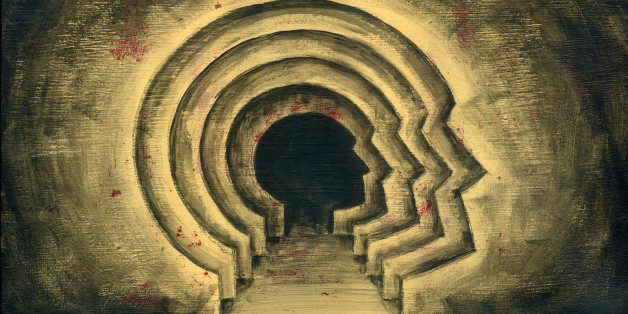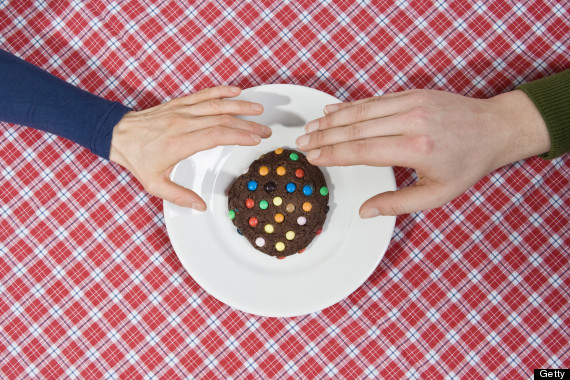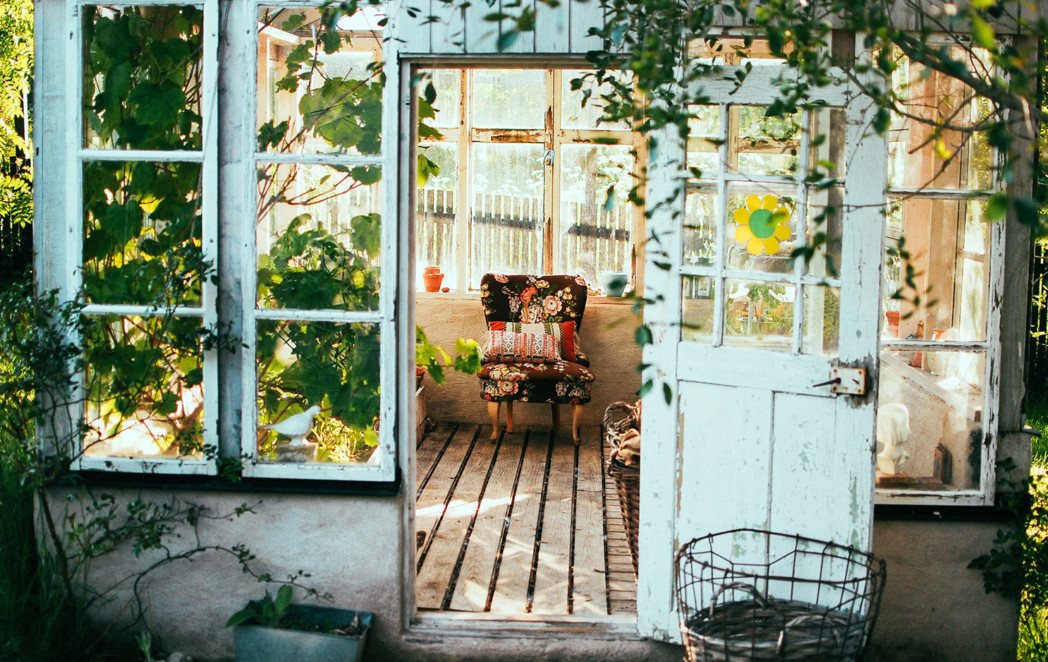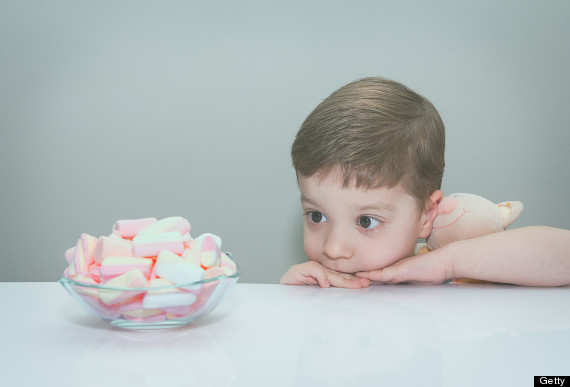
How would you rate your relationship on a scale of 1-10? If you answered “5” or less, you are in a bad relationship that needs some fixing.
BY DANIEL WALLEN
BORED?
Would you describe your life with your significant other as a routine? Nothing is more boring than monotony. Here’s five easy ways to give your relationship a little OOMPH!
1. Make time for each other.
Absence is rumored to make the heart grow fonder, but that doesn’t mean your relationship can thrive without any time devoted to it. Life gets busy, especially if you have kids/school/a job/a second job and OMG, ALL THE THINGS; but your relationship is a priority no matter how full your plate may be. Have a daily, 10-minute mini-date where you snuggle up with a silly YouTube video, take a quick walk, have some ice cream, or whatever you both enjoy.
2. Switch up date-night.
Dinner-and-a-movie is a staple for a reason (because it’s fun), but it can grow stale without the occasional mix-up. For example: You could grab coffee or hot cocoa, go to a park on a breezy day and find yourself with a perfect excuse to cuddle.
3. Take an adventure.
Do something exciting together! You could take a cruise, go on a road-trip, jump out of a plane, visit a rain forest, or climb Mt. Everest.
4. Learn something new.
Tackle a hobby of mutual interest with your partner. Whether you want to learn to speak Italian, become a Jeopardy contestant or create handmade jewelry is up to you. Challenging yourselves to grow will strengthen your bond and shake-up your ho-hum love life.
5. Create a Bucket List.
Make a list of all the crazy, ambitious, and wonderful things you want to do with your partner. Be happy you have someone to share your life with. Take small steps to make your Bucket List items happen.
ANGRY?
There is no reason to bottle up our feelings in relationships. I know you might be intimidated by conflict, but there is no hiding from it. Sure, you could just keep saying “nothing is wrong,” but that would only delay the inevitable. Feelings that are held in have a way of intensifying. Pissed off? Take a deep breath and let’s deal with it:
6. Count to 10.
If you find word vomit escaping your lips, one of those hurtful things you know you’re going to regret saying later, hold it in and count to ten. Breathe in. Breathe out. Still want to say it? Go for it. Not so much? Crisis averted.
7. See it from the other side.
“It was a great surprise to me when I discovered that most of the ugliness I saw in others, was but a reflection of my own nature.” -Anonymous
Before you criticize another person, take a second to look at the scenario from their perspective. Most people act the way they do for a reason. See yourself in their eyes to make sure the problem doesn’t reside in yourself.
8. Give and receive.
Did you get a wonderful back rub after a rough day at the office? Return the favor (or surprise your partner with a tasty dessert or coffee at work). A perceived imbalance in who puts the most into your relationship can make a person upset in a hurry. Split chores and housework fairly, take turns deciding what to have for dinner, and aim for equality in your relationship.
9. Express yourself with no filter.
You can’t expect your partner to know something is wrong if you don’t tell them. Express your feelings without filter (especially if you’re being asked “What’s wrong?” repeatedly). Confrontation isn’t fun but it’s also unavoidable. Dragging out a fight is just going to place unnecessary strain on your relationship, so get it over with and express yourself.
10. Appreciate each other.
What do you find sexy or handsome about your partner? Do they have any quirks you find wonderful? What is the sweetest thing they ever did for you? Sometimes, we’re so busy focusing on our partner’s negative traits that we forget to appreciate what we have and what made us fall in love with them in the first place.

Why do we do the things we do? Despite our best attempts to “know thyself,” the truth is that we often know astonishingly little about our own minds, and even less about the way others think. As Charles Dickens once put it, “A wonderful fact to reflect upon, that every human creature is constituted to be that profound secret and mystery to every other.”
Psychologists have long sought insights into how we perceive the world and what motivates our behavior, and they’ve made enormous strides in lifting that veil of mystery. Aside from providing fodder for stimulating cocktail-party conversations, some of the most famous psychological experiments of the past century reveal universal and often surprising truths about human nature. Here are 10 classic psychological studies that may change the way you understand yourself.
We all have some capacity for evil.
Arguably the most famous experiment in the history of psychology, the 1971 Stanford prison study put a microscope on how social situations can affect human behavior. The researchers, led by psychologist Philip Zimbardo, set up a mock prison in the basement of the Stanford psych building and selected 24 undergraduates (who had no criminal record and were deemed psychologically healthy) to act as prisoners and guards. Researchers then observed the prisoners (who had to stay in the cells 24 hours a day) and guards (who shared eight-hour shifts) using hidden cameras.

The experiment, which was scheduled to last for two weeks, had to be cut short after just six days due to the guards’ abusive behavior — in some cases they even inflicted psychological torture — and the extreme emotional stress and anxiety exhibited by the prisoners.
“The guards escalated their aggression against the prisoners, stripping them naked, putting bags over their heads, and then finally had them engage in increasingly humiliating sexual activities,” Zimbardo told American Scientist. “After six days I had to end it because it was out of control — I couldn’t really go to sleep at night without worrying what the guards could do to the prisoners.”
We don’t notice what’s right in front of us.
Think you know what’s going on around you? You might not be nearly as aware as you think. In 1998, researchers from Harvard and Kent State University targeted pedestrians on a college campus to determine how much people notice about their immediate environments. In the experiment, an actor came up to a pedestrian and asked for directions. While the pedestrian was giving the directions, two men carrying a large wooden door walked between the actor and the pedestrian, completely blocking their view of each other for several seconds. During that time, the actor was replaced by another actor, one of a different height and build, and with a different outfit, haircut and voice. A full half of the participants didn’t notice the substitution.
The experiment was one of the first to illustrate the phenomenon of “change blindness,” which shows just how selective we are about what we take in from any given visual scene — and it seems that we rely on memory and pattern-recognition significantly more than we might think.
Delaying gratification is hard — but we’re more successful when we do.
A famous Stanford experiment from the late 1960s tested preschool children’s ability to resist the lure of instant gratification — and it yielded some powerful insights about willpower and self-discipline. In the experiment, four-year-olds were put in a room by themselves with a marshmallow on a plate in front of them, and told that they could either eat the treat now, or if they waited until the researcher returned 15 minutes later, they could have two marshmallows.
While most of the children said they’d wait, they often struggled to resist and then gave in, eating the treat before the researcher returned, TIME reports. The children who did manage to hold off for the full 15 minutes generally used avoidance tactics, like turning away or covering their eyes. The implications of the children’s behavior were significant: Those who were able to delay gratification were much less likely to be obese, or to have drug addiction or behavioral problems by the time they were teenagers, and were more successful later in life.
We can experience deeply conflicting moral impulses.
A famous 1961 study by Yale psychologist Stanley Milgram tested (rather alarmingly) how far people would go to obey authority figures when asked to harm others, and the intense internal conflict between personal morals and the obligation to obey authority figures.
Milgram wanted to conduct the experiment to provide insight into how Nazi war criminals could have perpetuated unspeakable acts during the Holocaust. To do so, he tested a pair of participants, one deemed the “teacher” and the other deemed the “learner.” The teacher was instructed to administer electric shocks to the learner (who was supposedly sitting in another room, but in reality was not being shocked) each time they got questions wrong. Milgram instead played recordings which made it sound like the learner was in pain, and if the “teacher” subject expressed a desire to stop, the experimenter prodded him to go on. During the first experiment, 65 percent of participants administered a painful, final 450-volt shock (labeled “XXX”), although many were visibly stressed and uncomfortable about doing so.
While the study has commonly been seen as a warning of blind obedience to authority, Scientific American recently revisited it, arguing that the results were more suggestive of deep moral conflict.
“Human moral nature includes a propensity to be empathetic, kind and good to our fellow kin and group members, plus an inclination to be xenophobic, cruel and evil to tribal others,” journalist Michael Shermer wrote. “The shock experiments reveal not blind obedience but conflicting moral tendencies that lie deep within.”
Recently, some commenters have called Milgram’s methodology into question, and one critic noted that records of the experiment performed at Yale suggested that 60 percent of participants actually disobeyed orders to administer the highest-dosage shock.
We’re easily corrupted by power.

There’s a psychological reason behind the fact that those in power sometimes act towards others with a sense of entitlement and disrespect. A 2003 study published in the journal Psychological Review put students into groups of three to write a short paper together. Two students were instructed to write the paper, while the other was told to evaluate the paper and determine how much each student would be paid. In the middle of their work, a researcher brought in a plate of five cookies. Although generally the last cookie was never eaten, the “boss” almost always ate the fourth cookie — and ate it sloppily, mouth open.
“When researchers give people power in scientific experiments, they are more likely to physically touch others in potentially inappropriate ways, to flirt in more direct fashion, to make risky choices and gambles, to make first offers in negotiations, to speak their mind, and to eat cookies like the Cookie Monster, with crumbs all over their chins and chests,” psychologist Dacher Keltner, one of the study’s leaders, wrote in an article for UC Berkeley’s Greater Good Science Center.
We seek out loyalty to social groups and are easily drawn to intergroup conflict.

This classic 1950s social psychology experiment shined a light on the possible psychological basis of why social groups and countries find themselves embroiled in conflict with one another — and how they can learn to cooperate again.
Study leader Muzafer Sherif took two groups of 11 boys (all age 11) to Robbers Cave State Park in Oklahoma for “summer camp.” The groups (named the “Eagles” and the “Rattlers”) spent a week apart, having fun together and bonding, with no knowledge of the existence of the other group. When the two groups finally integrated, the boys started calling each other names, and when they started competing in various games, more conflict ensued and eventually the groups refused to eat together. In the next phase of the research, Sherif designed experiments to try to reconcile the boys by having them enjoy leisure activities together (which was unsuccessful) and then having them solve a problem together, which finally began to ease the conflict.
We only need one thing to be happy.
The 75-year Harvard Grant study —one of the most comprehensive longitudinal studies ever conducted — followed 268 male Harvard undergraduates from the classes of 1938-1940 (now well into their 90s) for 75 years, regularly collecting data on various aspects of their lives. The universal conclusion? Love really is all that matters, at least when it comes to determining long-term happiness and life satisfaction.
The study’s longtime director, psychiatrist George Vaillant, told The Huffington Postthat there are two pillars of happiness: “One is love. The other is finding a way of coping with life that does not push love away.” For example, one participant began the study with the lowest rating for future stability of all the subjects and he had previously attempted suicide. But at the end of his life, he was one of the happiest. Why? As Vaillant explains, “He spent his life searching for love.”
We thrive when we have strong self-esteem and social status.

Achieving fame and success isn’t just an ego boost — it could also be a key to longevity, according to the notorious Oscar winners study. Researchers from Toronto’s Sunnybrook and Women’s College Health Sciences Centre found that Academy Award-winning actors and directors tend to live longer than those who were nominated but lost, with winning actors and actresses outliving their losing peers by nearly four years.
“We are not saying that you will live longer if you win an Academy Award,” Donald Redelmeier, the lead author of the study, told ABC News. “Or that people should go out and take acting courses. Our main conclusion is simply that social factors are important … It suggests that an internal sense of self-esteem is an important aspect to health and health care.”
We constantly try to justify our experiences so that they make sense to us.
Anyone who’s taken a freshman Psych 101 class is familiar with cognitive dissonance, a theory which dictates that human beings have a natural propensity to avoid psychological conflict based on disharmonious or mutually exclusive beliefs. In an often-cited 1959 experiment, psychologist Leon Festinger asked participants to perform a series of dull tasks, like turning pegs in a wooden knob, for an hour. They were then paid either $1 or $20 to tell a “waiting participant” (aka a researcher) that the task was very interesting. Those who were paid $1 to lie rated the tasks as more enjoyable than those who were paid $20. Their conclusion? Those who were paid more felt that they had sufficient justification for having performed the rote task for an hour, but those who were only paid $1 felt the need to justify the time spent (and reduce the level of dissonance between their beliefs and their behavior) by saying that the activity was fun. In other words, we commonly tell ourselves lies to make the world appear a more logical, harmonious place.
We buy into stereotypes in a big way.

Stereotyping various groups of people based on social group, ethnicity or class is something nearly all of us do, even if we make an effort not to — and it can lead us to draw unfair and potentially damaging conclusions about entire populations. NYU psychologist John Bargh’s experiments on “automaticity of social behavior”revealed that we often judge people based on unconscious stereotypes — and we can’t help but act on them. We also tend to buy into stereotypes for social groups that we see ourselves being a part of. In one study, Bargh found that a group of participants who were asked to unscramble words related to old age — “Florida,” “helpless” and “wrinkled” — walked significantly slower down the hallway after the experiment than the group who unscrambled words unrelated to age. Bargh repeated the findings in two other comparable studies that enforced stereotypes based on race and politeness.
“Stereotypes are categories that have gone too far,” Bargh told Psychology Today. “When we use stereotypes, we take in the gender, the age, the color of the skin of the person before us, and our minds respond with messages that say hostile, stupid, slow, weak. Those qualities aren’t out there in the environment. They don’t reflect reality.”
Source: http://www.huffingtonpost.com/2013/10/18/20-psychological-studies-_n_4098779.html

“Your sacred space is where you can find yourself over and over again. ~ Joseph Campbell
There’s a lot of talk online and in the spiritual community about “sacred space”. But if you’re new to this world, or just haven’t ever explored this concept, it can feel unattainable and maybe even a bit scary. So I’m gonna break it down for you.
WHAT IS A SACRED SPACE?
A sacred space is your sanctuary. A place where you can meditate or pray, work alchemy, relax, practice yoga, dance, or even just check-in with yourself and your dreams. It’s a space where you prepare yourself for the day. And a place for you to come home to, to recharge your body, mind and spirit. Knowing that when we care for our space in this way, we are more clear, open, grounded, magical – creating sacred space facilitates this and restores us to our best selves.
How and where you decide to create your sacred space is really up to you. It’s very much a personal thing. It does not have to be grand or “Pinterest ready”. It just has to feel good. And while I’m fascinated by Feng Shui and other methods of spiritually designing our spaces, for some (myself included) our homes are not “Feng Shui” friendly, nor do we have the time, space or money to create a mini temple at home. What to do? Keep reading on and I’ll show you.
WHY WOULD I CREATE A SACRED SPACE?
It may be that I am a spring baby or the fact that my rising sign is in Virgo, but the act of spring cleaning and creating sacred space lights me up. This ritual is almost like an active meditation for me, and very cathartic. Just the act of making sacred space can make me feel like Beyonce before a performance. Bring it!
Having a sacred space of our very own gives us permission to just be. We don’t have to meet anyone else’s needs but ours. And for that single moment, we feel more deeply present. To hear nothing but the sound of your breath or a song that will break your heart open is everything. Our sacred space is a place for our intuition to sit and converse with us without the chaos of everyday life.
Designating a space and declaring it sacred – there is power in that my darlings.
WHAT DOES A SACRED SPACE LOOK LIKE?
Personally, I have several different spaces. I chose to create them in places I spend most of my time on a daily basis. It’s where I create, hustle, practice self-love and care, organize thoughts & feelings, exhale, make magic and center myself.
Here are examples of my sacred spaces:
HOME
I love my nook at home. When everyone is asleep, I swear it’s the most magical place in the world. It is my workspace / boudoir / altar. When I am home, that is where you will find me. My walls have pictures, art, words and images that inspire and express who I am. I have textures, fabrics, crystals, decks of cards, oils and candles. Everything in there is intentional. I romance myself and my space with incense and fresh flowers. I created it next to a balcony, where I am bathed by the light that radiates through my sheer white curtains hanging. It is heaven.
WORK
As a creative / designer, I make sure my workspace is infused with visuals, the perfect playlist, the right pens, planner and my headphones. It’s all part of my weaponry at work, my metaphorical “do not disturb” sign. In a workplace environment, you have to protect your space and set your boundaries. I have Palo Santo and rosewater to clear and bless. Crystals for creativity, hustle and energy protection (black tourmaline protects my computer, gadgets and myself, especially when Mercury goes retro). I’m grateful to be next to a window where the sun hangs out with me in the afternoon. My work space thus becomes a perfect place to recharge whenever I need it.
MY CAR
I have a long commute to and from work. I could easily let the crazy of rush hour take over, but I choose not to. My car is my space to prepare for work. And to release everything from my day and recharge before I come home to my family. I light Palo Santo to clear space, talk to my guides, angels, ancestors, and my intuitive voice when it wants to be heard. I have playlists, classes or audiobooks ready to accompany me on my drive home. And then there are also times that I just drive in silence. Silence is truly golden. On the really heavy work days, I always take a 20 min nap right in the car before I walk into my home. This mama loves a nap!
MY BODY
I decorate my body with patterns, jewelry, metallics and textures. I cleanse & heal it with coconut milk or salt baths. I wear talismans (my turquoise pendulum, my Frida pin, my “Tribe” pendant) to remind me of my purpose and who I am. My arms and hands are adorned with ink of Goddesses & deities who I connect with (Erzuli & Kali Ma), my daughters’ names (my loves), personal symbols, etc. I wear oils on my skin, honey on my lips and crystals in my bra to heal, expand, protect & awaken all of me. I am my very own altar.
HOW TO CREATE SACRED SPACE
Now that you’ve seen how I do sacred space, let’s talk yours. Remember, this is your space and personal expression. Drop any over-thinking or judgment. There is no right or wrong way to do this. Here are a few starting points to help…
PICK A SPACE
If you’re wondering what space to choose, I suggest starting at home first. Choose a space in your home, preferably one where you can have some privacy. It will probably be a place that you already tend to spend most of your time in. You’re bringing energy and intention here so choose what connects to your Soul. Know that your space will always be changing – it evolves as you do.
SO FRESH & SO CLEAN (CLEAN)
The goal is to reclaim some sacred space for yourself, so you want to make sure it’s fresh and clean. Ditch (or donate) anything that no longer serves you. And be very selective about what you bring into the space once it’s clean. Try clearing and blessing your space with sage or palo santo (they even make spraysif you’re sensitive to smoke). Cleansing brings clarity. And clarity, both physical and mental, is a beautiful gift to give yourself. So do this on a regular basis.
ADORNMENTS
This is my favorite part. What are your desires? How do you want to feel? It’s time to awaken your inner child and get creative. Explore colors & textures. Collages, books & art pieces. Pillows, tapestries, lighting, fresh flowers, music, incense, oils, dark chocolate, whiskey. Collaborate with your senses here!You can create an altar that hold objects of deep meaning, candles, statues of deities, tarot cards, love letters or crystals, that are fully charged, to help you handle some spiritual gangster business. Whatever you decide, this space needs to make you feel good and raise your energy. This is where you start and end your day. This is your space, so run wild with it.
SET YOUR INTENTION
What is your intention for this space? We can sit in an empty room with nothing but you and that intention – and that right there is sacred power. Pray, connect, ask, open up to receive, be grateful. Bless your space with this intention whenever you step foot into it.
And there it is. A sacred space to call your own. Now, just be. Close your eyes and soak in the beauty and magic of this magical place you just created all of yourself. Enjoy it!
How to Create a Sacred Space

















